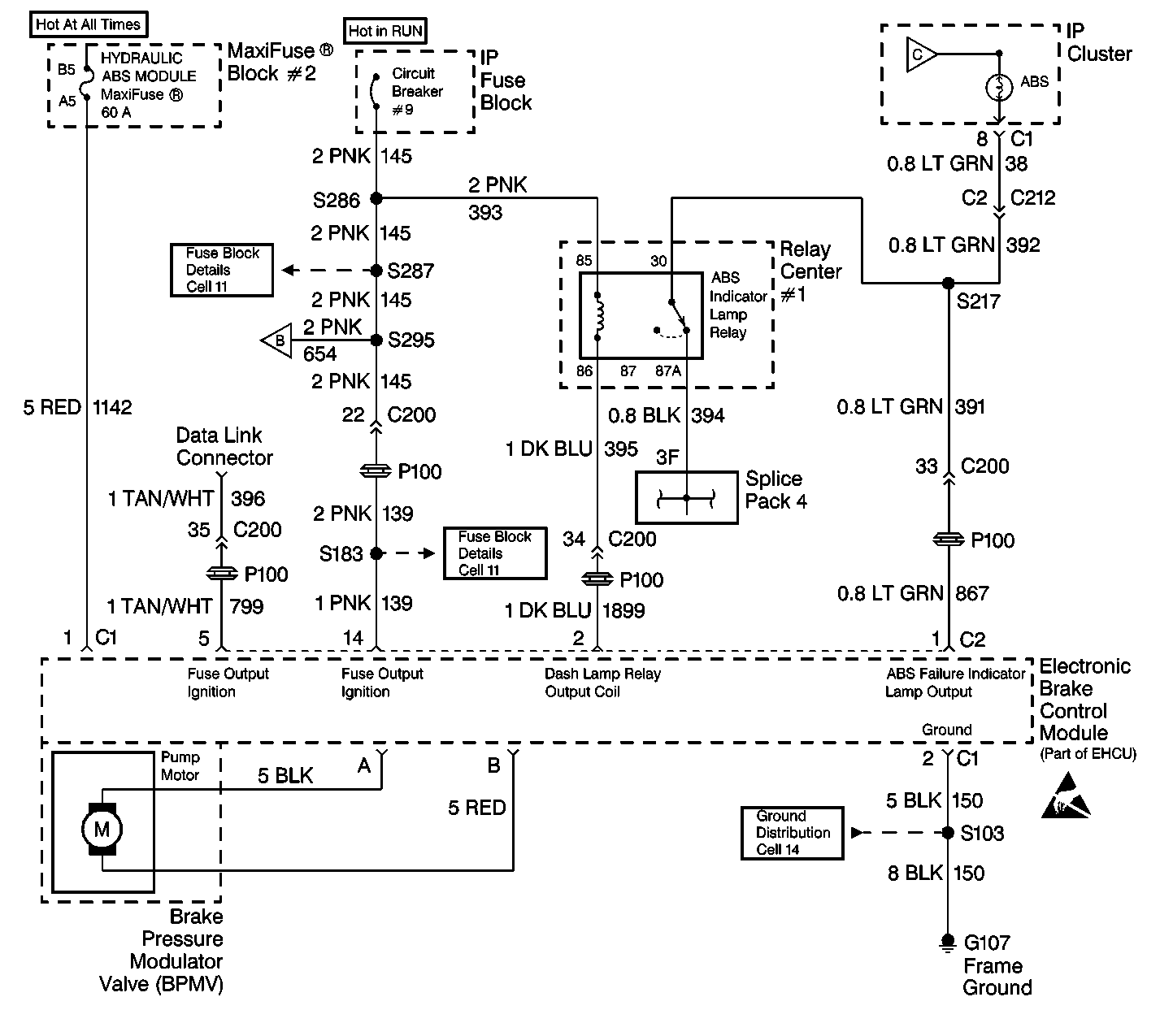
Circuit Description
The amber ABS indicator lamp is normally on (voltage supplied through the normally closed contacts of the ABS indicator lamp relay) unless the ABS indicator lamp relay is switched off by the EBCM. This logic ensures that the ABS indicator lamp will always be turned on if there is an open in CKT 1899, an open in CKT 395 or a faulty EBCM.
Conditions for Setting the DTC
| • | High voltage is present on the ABS indicator lamp control circuit when low voltage is expected (lamp is turned on) |
| • | Anything that keeps the ABS indicator lamp circuit high when the lamp is expected to be on |
Action Taken When the DTC Sets
The ABS is not disabled.
Conditions for Clearing the DTC
| • | Repair the conditions responsible for setting the DTC |
| • | Use the Scan Tool Clear DTCs function |
Diagnostic Aids
DTC C0286 typically sets because of a shorted ABS indicator lamp relay coil. Yet DTC C0286 can also set because of a short to voltage in the wiring between the ABS indicator lamp relay and the EBCM.
Test Description
The numbers below refer to the steps in the diagnostic table:
-
This step checks for normal operation of the ABS indicator lamp.
-
This step turns off the ABS indicator lamp with a J 36169-A .
Step | Action | Value(s) | Yes | No |
|---|---|---|---|---|
1 | Was the Diagnostic System Check performed? | -- | Go to Step 2 | |
| -- | Go to Diagnostic Aids. | Go to Step 3 | |
Does the ABS indicator lamp turn off? | -- | Go to Step 5 | Go to Step 4 | |
4 | Inspect the jumper wire fuse. Is the fuse open? | -- | Go to Step 7 | Go to Step 5 |
5 |
Does DTC C0286 set as a current DTC? | -- | Go to Step 6 | Go to Diagnostic Aids |
6 | Replace the EBCM. Is repair complete? | -- | -- | |
7 | Repair a short to voltage in CKT 1899. Refer to Wiring Repairs in Wiring Systems. Is the repair complete? | -- | -- |
